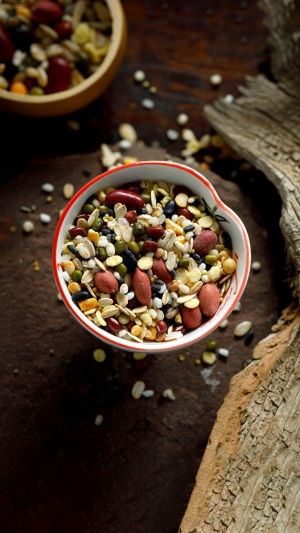The concept of "five grains" holds a significant place in ancient Chinese culture, representing the five main grains that played a crucial role in the history of Chinese agriculture, providing humans with abundant food resources.
This article aims to delve into the origins, characteristics, and importance of these grains in human life, shedding light on their diverse roles and cultural significance.
<h3>1. Rice:</h3>
Rice, also known as the staple of Chinese cuisine, stands as one of the most important grains. An aquatic plant mainly distributed in subtropical and tropical regions, rice cultivation in China dates back to ancient times.
With strong growth adaptability and a substantial demand for water, rice is typically grown in paddy fields.
Rice is categorized into indica and japonica varieties. Indica rice boasts a higher yield and resistance to rice blast, while japonica rice offers a smoother taste, ideal for culinary specialties like sushi. Rich in starch and minerals, rice stands as a cornerstone of the Chinese diet.
<h3>2. Wheat:</h3>
Wheat, a global staple and a vital member of the five cereals, is a primary food crop worldwide.
Flourishing in temperate and cold zones, China's main wheat-producing regions include the Huang-Huai-Hai Plain (North China Plain) and the middle and lower reaches of the Yangtze River. With high adaptability, wheat is suited to various climate conditions.
Wheat is divided into spring and winter varieties. Spring wheat, sown in spring, has a shorter growing season, while winter wheat is sown in fall and regrows in spring after overwintering.
Serving as the primary raw material for flour, wheat is widely used in the production of pastries, noodles, steamed buns, and other culinary delights.
<h3>3. Yellow Rice:</h3>
Yellow rice, renowned for its sticky texture after cooking, finds use in the production of cakes. Yellow rice noodles, also known as cake noodles, are made by peeling millet into yellow rice and grinding it into flour.
Originally a Northern grain, yellow rice is light yellow, sticky, golden, and elastic when cooked. It possesses a sweet taste, and a cold nature, and is non-toxic, primarily used in traditional Northern cakes.
<h3>4. Millet:</h3>
Millet, known for its drought tolerance and diverse varieties, holds historical significance. Thriving in dry areas with minimal irrigation, millet has been a crucial part of Chinese agriculture for centuries.
<h3>5. Soybeans:</h3>
Soybeans, a key source of oil and protein and one of the world's primary protein crops are cultivated in Asia, North America, and South America. Rich in high-quality protein, fat, and dietary fiber, soybeans play a pivotal role in human growth, development, and the maintenance of physiological functions.
<h3>Conclusion:</h3>
Grains constitute an integral part of Chinese agricultural culture, representing not only rich agricultural resources but also a fertile natural environment. Each grain, with its unique characteristics and applications, contributes to the vibrant tapestry of China's diverse food culture.
In our modern society, it is imperative to prioritize the protection and sustainable utilization of grains, fostering a healthier and more diversified food landscape. As abundant harvests continue to enrich our lives, the importance of these grains in shaping the cultural and culinary identity of China remains ever apparent.





